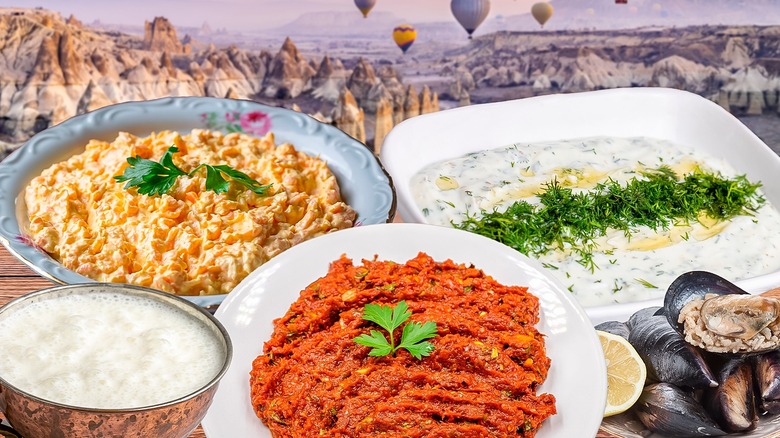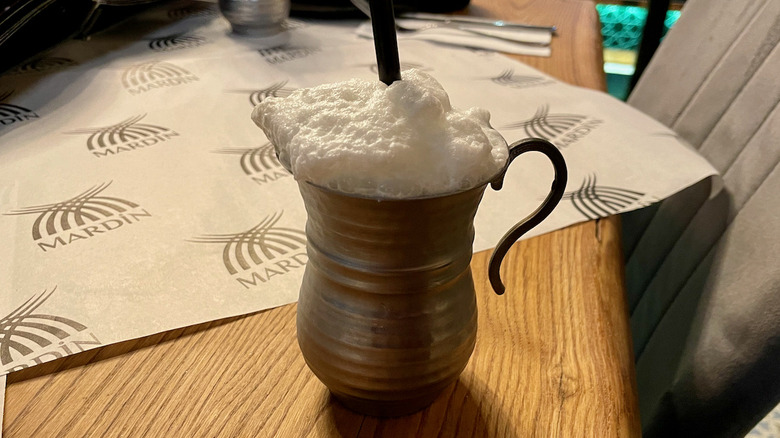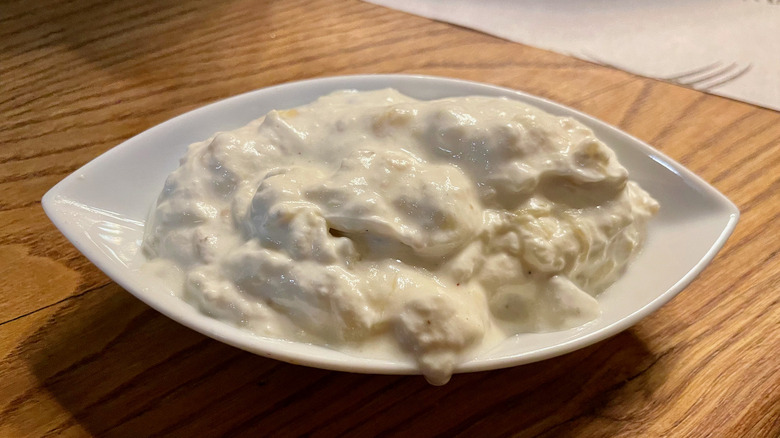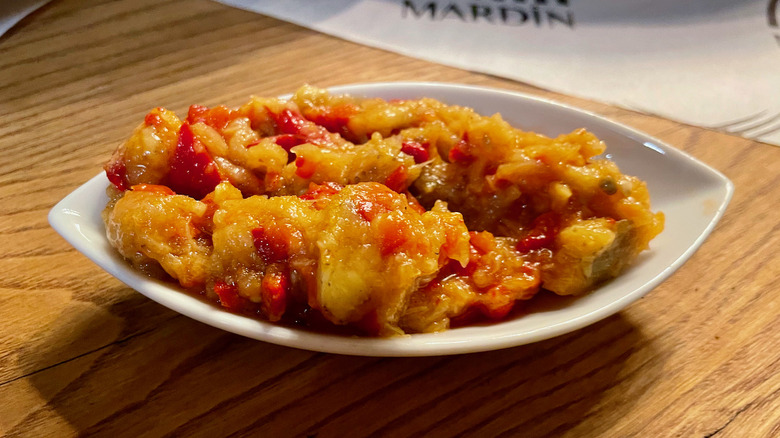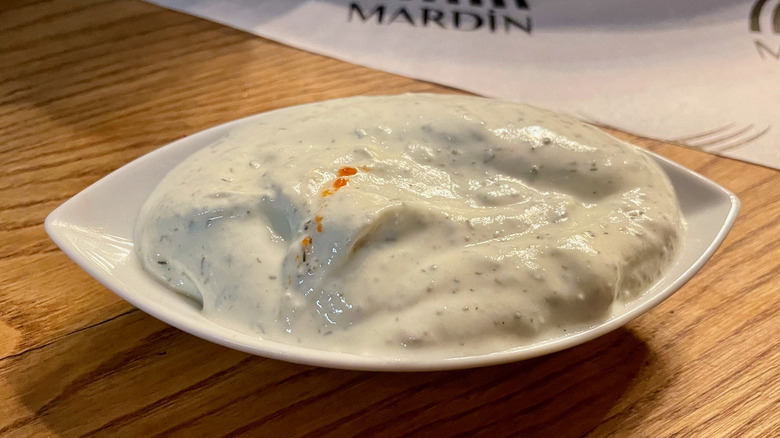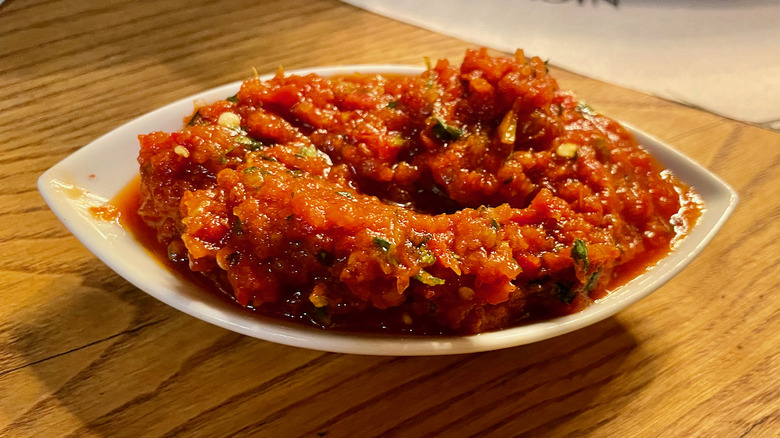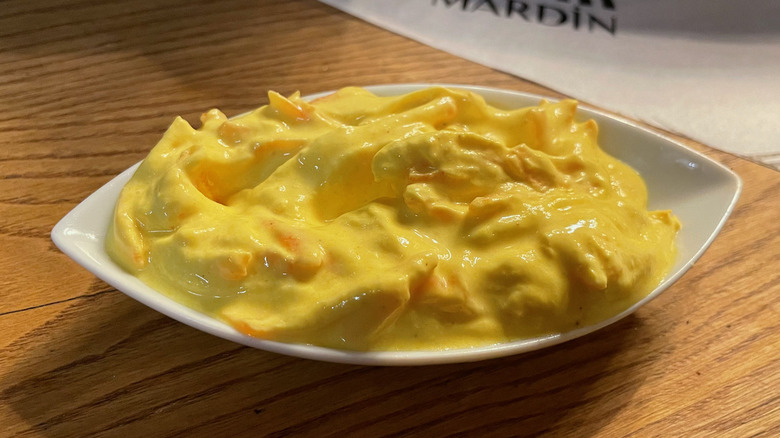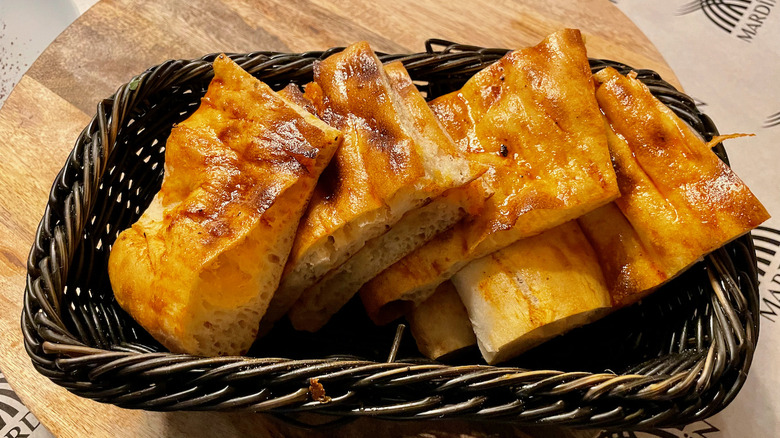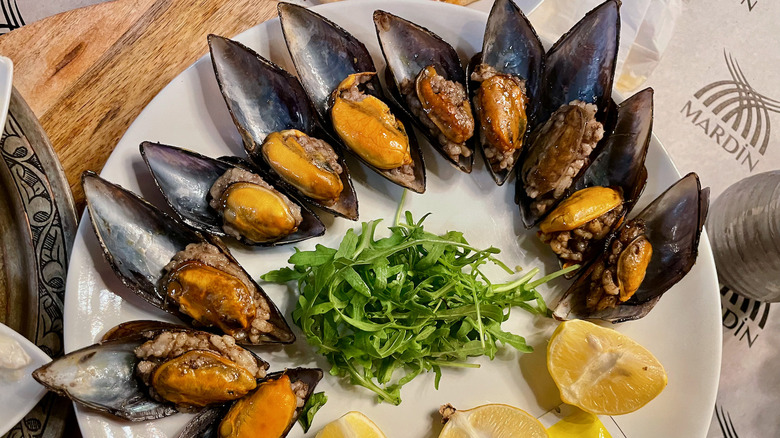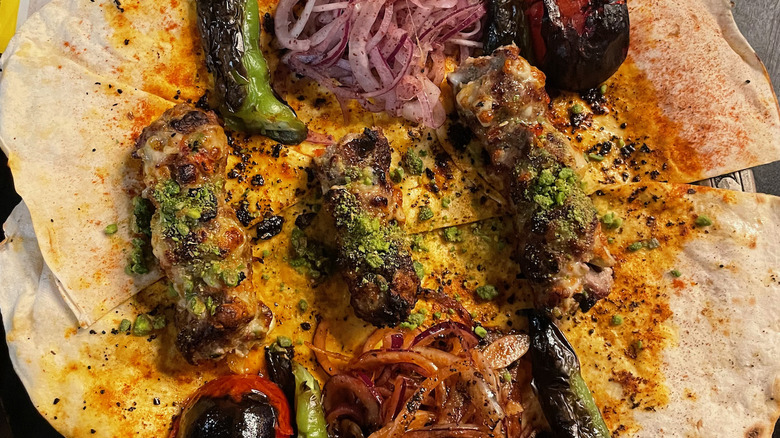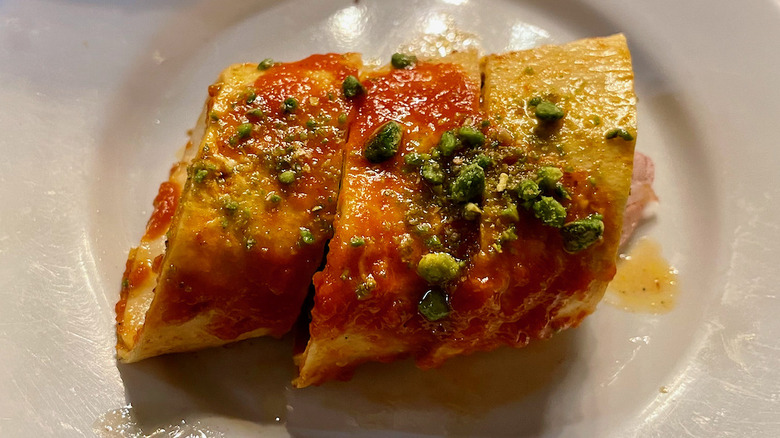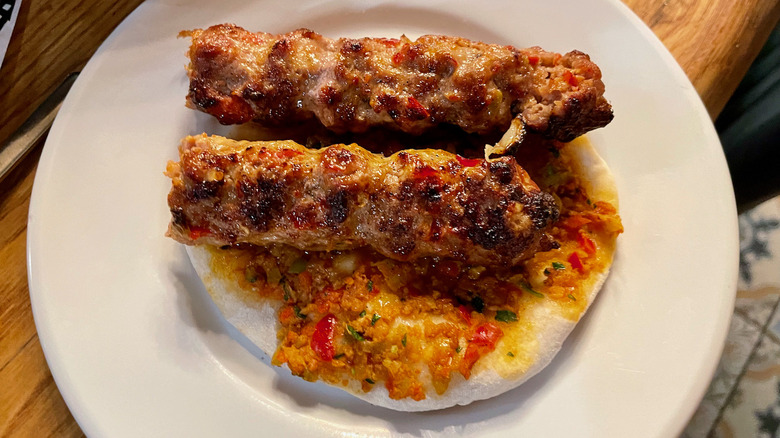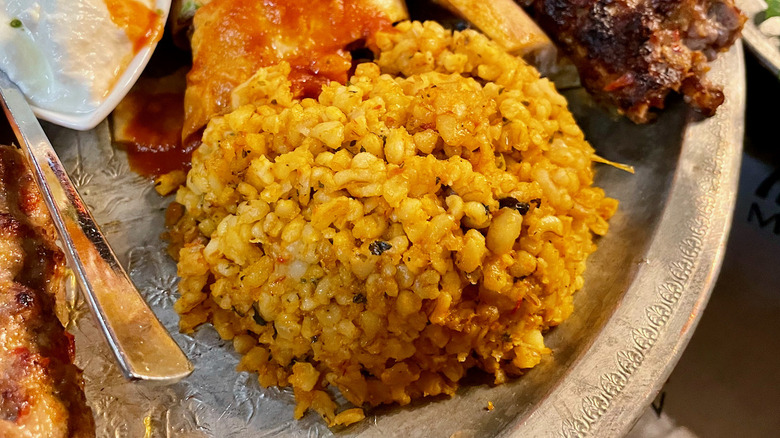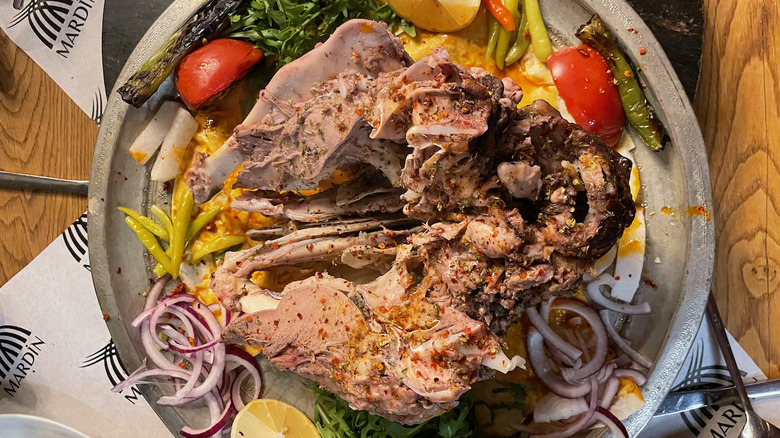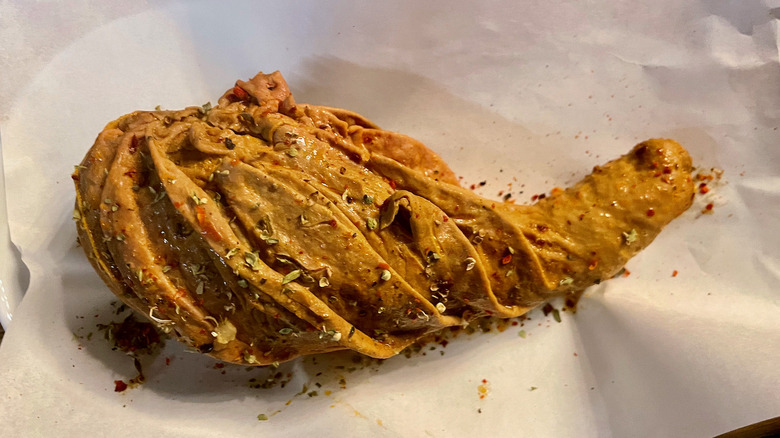14 Turkish Dishes You Need To Try At Least Once
For this guide to some of the can't-miss dishes in Turkish cuisine, we wanted to bring you information straight from the source, so naturally we flew to ... Berlin, Germany. Yes, while it might seem strange to seek out Turkish eats in Germany's capital city, Berlin actually has the largest population of people of Turkish descent outside of Turkey itself.
With such a large number of Turkish people in the city, it's no surprise that there seems to be a Turkish restaurant on every corner. Many of them are simple takeout kebab shops, but we sought out a place that served a greater variety of dishes. We ended up visiting Restaurant Mardin, located in Neukölln, a neighborhood with a strong Turkish presence. Named after a city in Southeast Turkey and serving some specialties from that region, Mardin is an ambitious business — its owner, Hüseyin Sanci, hopes to expand the menu every few months by adding traditional dishes that are hard to find outside of Turkey. With his guidance, we ordered a wide variety of classic Turkish dishes from different regions of the country. In an exclusive interview with Tasting Table, Sanci explained what made each dish special.
1. Ayran
Ayran is a salty, savory yogurt drink that's served chilled. Hüseyin Sanci explained to us that versions of the beverage are served all over the Middle East, including in Iran. Depending on where you order it, ayran can sometimes be flavored with herbs. In 2013, Turkish Prime Minister Recep Tayyip Erdoğan declared ayran to be the country's national drink.
The Turkish version we drank at Mardin was herb-free but still tasted highly seasoned from salt and lemon juice, which added fruity lightness to the tangy yogurt. Sanci told us that the base mixture of his ayran gets pumped all day through a special machine imported from Turkey that aerates it and changes the flavor. When a customer orders a drink, the yogurt base is poured into a chilled metal mug and then topped with sparkling water. The seltzer, in addition to adding carbonation, creates a fluffy head on the drink — texturally, it's very similar to a classic New York-style egg cream.
We can see why ayran would be popular during the hot Turkish summer — despite being made from fermented dairy, it tasted just as frosty and refreshing as soda. The tangy flavor also complemented all the grilled meats we consumed during our meal.
2. Baba gannus
Baba gannus (also known as baba ganoush or abugannus), is a type of roasted eggplant dip/spread. Like ayran, its popularity extends far beyond the borders of Turkey, but the Turkish version is slightly different from the type enjoyed in other countries.
In much of the Middle East, baba gannus is made by mashing charred, peeled eggplant with tahini, olive oil, garlic, and lemon juice until it becomes a smooth paste. Different areas of Turkey put their own spin on the dip, but the one we sampled included a hefty portion of yogurt mixed into the pureed eggplant. The yogurt made the baba gannus feel less dense and also diluted the taste of the eggplant, which could be a good thing for those who don't love the strong flavor of this vegetable. The ingredients in the dip were whipped until fluffy.
The baba gannus was one of several dips and salads served as a sampler with bread at the beginning of the meal as we waited for our entrees to be prepared. Collectively, these small dishes are known as meze.
3. Patlican sögürme
The next dish in our appetizer sampler, patlican sögürme, was another paste based on grilled eggplant, but it could not have been more different from the baba gannus. Rather than being whipped into a cloud-like spread, here the eggplant was minced finely and combined with roasted peppers, paprika, and olive oil. Without the yogurt acting as a buffer, the bittersweet taste of the eggplant came to the fore, as did the smokiness the vegetable absorbed during its time on the grill.
At Mardin, the eggplants are grilled every night after dinner service so they can be used in the appetizers the next day. They're cooked until the skins are charred and the flesh is meltingly tender — despite the lack of dairy, the patlican sögürme had a creamy mouthfeel from the grilled eggplant. This dish straddled the line between a dip and a salad; it was great on bread, but it was just as delicious eaten on its own with a fork.
4. Haydari
This was the simplest dish we tried during our visit to Mardin. Hüseyin Sanci described it as just "yogurt with fresh garlic." However, this basic description didn't fully capture the nuanced flavors that were present in this dip. The yogurt was exceptionally rich and thick, more substantial even than the Greek-style yogurt you can buy in American grocery stores. The sharpness of the garlic cut through the fatty dairy flavor of the yogurt, while finely minced herbs added freshness and complexity. There was also a splash of orange-colored oil that looked like it was infused with either saffron or paprika; either way, its warm taste paired nicely with the refreshing dip.
The yogurt used for haydari is so thick because it is strained to get rid of excess liquid. Depending on the recipe, the dip may also include some salty Turkish white cheese for added flavor. It is often served as a duo with the next meze on our list, aci ezme.
5. Aci ezme
You can almost think of aci (or acili) ezme as the Turkish answer to tomato salsa. On Mardin's menu, it's translated as "bitter paste," but it's more common to translate acili as "spicy."
Really, both bitter and spicy are equally apt descriptors for the flavor of this dish. While it had a touch of heat, the aci ezme we ate at Mardin certainly wasn't as spicy as Mexican-style salsa, and the raw vegetables it was made with did contribute a pleasantly mild bitterness. Tomatoes, chiles, onions, and parsley were all chopped together until they combined into a slightly chunky paste. The brightness and acidity of the raw tomatoes and onions contrasted beautifully with the other mezes made with cooked vegetables and dairy.
This dish originated in Southern and Eastern Turkey, where local tastes trend toward slightly spicier food than is enjoyed in the rest of the country (although Turkish food is often cooked with a lot of spices, it isn't typically very hot). It's usually spiced up either with dried chile flakes or Turkish chile paste.
6. Havuç tarator
This meze is sort of a carrot version of baba gannus — it's made with chopped grilled carrots mixed with yogurt. However, the choice of vegetable and some details about how it's prepared make it taste much different from its eggplant cousin.
Hüseyin Sanci told us that at Mardin, the carrots are cooked on the grill for three to four hours. This transforms their flavor, concentrating their sweetness but also bringing out savory, roasty, umami notes. Despite the long cook time, the carrots don't become mushy and are still firm enough to process into long shreds before mixing with thick yogurt. The shredded carrots give this dip a chunkier texture than the baba gannus.
The long grilling method employed by Mardin to cook the carrots is different from a simpler, faster strategy for preparing havuç tarator that home cooks sometimes use. Rather than cooking the carrots whole, they can be shredded while raw, then simply cooked in a pan for a few minutes to soften them up.
7. Tirnak ekmek
We received several types of bread with our meal, including paper-thin lavas and pizza-like lahmacun, which we will explain later. But the bread we used to scoop up all of our mezes was an airy, focaccia-esque loaf called tirnak ekmek, which Hüseyin Sanci translated as "the bread of fingers." It earns this wacky name because when the dough is being pressed out, the baker uses their fingertips to make indentations all across the surface of the loaf. Like the similar divots in focaccia bread, these craters allow the dough to hold the delicious oil that this bread is generously doused with.
The tirnak ekmek at Mardin was extraordinarily delicate, with a light crumb and a thin, slightly crispy crust. It had to be eaten while fresh; per Sanci, his cooks must bake a fresh batch every hour to ensure the best quality. In addition to being a perfect pairing for meze, this type of bread is a classic companion for grilled kebabs.
8. Midye dolma
The midye dolma, or rice-stuffed mussels, were unlike any other mussel dish we've had before. Though Mardin sources its mussels from Malaga, Spain, the way the restaurant prepares this ingredient comes straight from Istanbul. Per Hüseyin Sanci, "They're a traditional Istanbul street food. All over Istanbul, in all the streets and the corners, anyone who's selling mussels, it's all in the same family. We call them 'the mussel mafia' in Turkey."
Though these mussels are meant to be snacked on mindlessly like sunflower seeds, according to Sanci, they take a long time to prepare. First, the rice is cooked with a dozen different herbs. Then, it's allowed to sit overnight — this allows the fragrance from the herbs to infuse into the rice. Then, the rice is stuffed inside the mussel shells and the mollusks are cooked. As they cook, the flavors from the rice perfume the shellfish. Sanci says there is a special trick to keep the shells of the mussels closed until they're done — this traps the flavor inside the shells. He calls the dish "Turkish sushi," as it combines rice and seafood.
Whatever the cooks are doing to prevent the mussels from opening while they cook, it leads to a buttery, tender final result. The mildly floral flavor of the herbs is present but not overly strong; the briny taste of the mussels themselves is highlighted. This dish would be great with a crisp white wine on a hot day, as recommended by Sanci.
9. Kebab
We ate three types of kebabs at Mardin. All were made with skewered, grilled ground meat, but the meat was not put through a mechanical meat grinder. Instead, it was processed in a much more traditional and labor-intensive way: minced by hand with a special knife called a zirh. Zirhs look like a cross between an Italian mezzaluna knife and a cutlass; they're meant to be used with two hands to quickly mince large quantities of meat. The zirhs at Mardin were about two feet long.
Kebabs with hand-minced meat definitely taste better than ones made with pre-ground. The hand-chopped stuff lacks the bouncy texture that ground beef sometimes develops when it's cooked; it stays soft even when grilled to well done. It also seems to retain more moisture on the grill.
Kebab meat is typically minced together with spices and other ingredients. We tried standard shish kebabs with seasoned meat, Adana kebabs with hot pepper added to the mix, and a special cheese-and-pistachio kebab that's unique to the Mardin region of Turkey. This last style was the most special; the toasted pistachios enhanced the umami notes of the lamb, while the fat from the cheese basted the meat while it cooked, making it extra succulent. Kebabs are usually served with some kind of bread as well as grilled vegetables and pickles. You can combine the meat with these accompaniments to customize each bite.
10. Beyti
One of the classic types of bread to serve with kebabs and other grilled meats in Turkey is lavas, an extra-thin flatbread that's sort of halfway between a pita and a flour tortilla. You can use lavas to wrap your kebab yourself, but if the restaurant serves the kebab pre-wrapped in lavas and soaked in tomato sauce, then it's called beyti kebab.
The tomato sauce used for this dish is lightly cooked — it's a bit like marinara or pizza sauce but with Middle Eastern seasonings. The lavas bread makes for a soft wrapper; it's softer than a tortilla would be. The beyti kebabs at Mardin were also brushed with oil or butter, which made the bread extra soft and rich-tasting. A sprinkle of chopped, toasted pistachios on top provided some textural contrast. Many different meat mixtures can be used inside beyti kebabs, but Mardin just uses its standard shish kebab meat. Some recipes call for yogurt sauce in addition to the tomato.
11. Lahmacun
If midye dolma is Turkish sushi and aci ezme is Turkish salsa, then lahmacun is Turkish pizza. This flatbread is a little thicker and fluffier than lavas but not as thick as pita. It's typically shaped into a circle and baked with toppings like meat or vegetables, making it quite similar to Italian pizza, though it lacks cheese.
Many Turkish restaurants in Berlin serve huge lahmacun piled with meaty toppings, but at Mardin, we ate little ones about the size of street tacos. Hüseyin Sanci told us that this style, findik lahmacun, is particular to the Mardin region of Turkey and is used primarily to decorate plates filled with meat. We used them to make miniature kebab wraps, which were delicious. Like the beyti kebabs, the lahmacun were topped with tomato sauce, but it was very distinct from the sauce on the beyti. Instead of being smooth, it was fairly chunky, and it tasted like it had peppers in addition to tomato.
12. Bulgur pilaf
As if the three types of bread weren't enough carbs, our kebabs were also served with a side of bulgur pilaf. What is bulgur? Although it looks very similar to rice (and can be cooked in a pilaf just like rice), it's actually whole-grain wheat that's been processed in a specific way. The kernels of wheat are cracked and then par-cooked before being dried. This makes the wheat cook much faster than it normally would — it only takes around 10 minutes of simmering. The grain itself has a nutty, slightly toasty flavor.
Bulgur pilaf is a traditional partner to grilled meats in Turkey. The version we ate at Mardin was cooked in a tomato-based broth that lent it a wonderful orange-gold color and a deliciously savory taste, but it wasn't overly flavorful. That's not the point — bulgur pilaf is supposed to be a starchy platform for the main dish. It shouldn't be intense enough to overshadow the meat.
13. Kuzu kelle
Kuzu kelle is the roasted head of a lamb, and it doesn't hide what it is — even though the one at Mardin was presented upside down, it was still clearly a whole head. The dish isn't for the squeamish, but people who aren't bothered by the aesthetics will be rewarded with the most desirable meat on the entire animal.
The kuzu kelle at Mardin is rubbed with spices and slow-cooked over an open fire until it's meltingly tender. There are many different types of meat hidden in the nooks and crannies of a lamb's skull, but the two biggest (and arguably most delicious) cuts are the cheeks and the brain. The cheeks taste like meat from any other part of the lamb except for the fact that they're incredibly soft; the texture is similar to pulled pork. The brain, on the other hand, is its own special delicacy. It's incredibly high in fat, with a creamy texture. The brain almost tastes like lamb-flavored butter. Hüseyin Sanci made sure we scooped out every last bit of brain with spoons, as it's the best part.
14. Sirdan
Sirdan is another delicacy for people who are interested in eating parts of the lamb beyond the leg or the loin. It's made with a stomach stuffed with seasoned rice and then cooked in a flavorful broth until tender. Hüseyin Sanci told us "It's a very traditional food in the east of Turkey, particularly the city of Adana." When prepared correctly, the stomach ends up soft and well-seasoned, and the gaminess of the meat is set off by the aromatic rice.
Cooking with stomach is tricky because it must be well-cleaned to purge it of its funky flavor. At Mardin, the lamb stomachs are left to soak in water for a day, then cleaned in fresh water three times. Only then can they be stuffed and boiled. Sanci said the rice stuffing is the same one he would use for stuffed grape leaves. It was heavily seasoned with warming spices like cumin and cinnamon.
